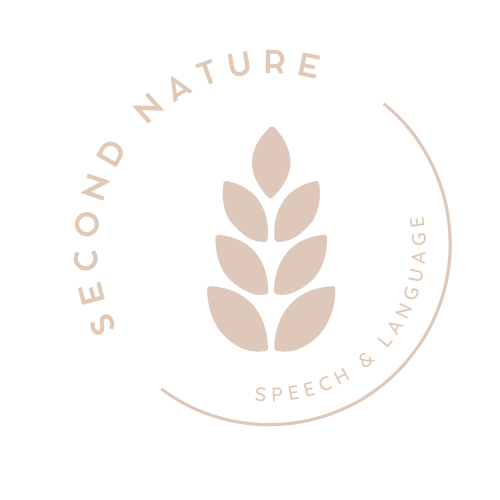Child Services
-
Focus is mainly on supporting speech and language development (understanding and using words).
Therapy is play-based, engaging, and designed to teach language in natural, everyday interactions. This may include:
Encouraging first words and gestures through modeling
Improving understanding, such as, following simple directions and identifying objects and pictures
Using more words and sentences by expanding vocabulary
Teaching social skills, such as, turn-taking, joint attention, and greetings
Improving speech sounds and clarity
Involving parent coaching for everyday practice
-
Broader focus on social communication and interaction, not just language.
Children need to connect, share, and engage with others before words become meaningful tools for communication. This helps children understand the purpose of communication — not just producing words, but using them to interact, share ideas, and build relationships.
Once a child is engaged and motivated to communicate, language develops more naturally and effectively. Strategies may include:
Joint attention (sharing attention with another person)
Gestures, pointing, showing before words
Turn-taking in play and routines
Building motivation to communicate
Intervention is about helping the child learn how to engage with others and communicate across different modes (gestures, eye gaze, vocalizations, words).
Language goals are included, but only once social connection and communicative intent are established.
-
Speech sound errors are first evaluated to determine if these are developmental (age-appropriate) or need intervention.
Therapy helps children learn to produce speech sounds correctly through structured activities, exercises, and play-based techniques, by:
Using visual, verbal, and tactile cues to guide proper articulation.
Encouraging self-monitoring and involve caregivers to reinforce skills
To keep therapy sessions motivating, games, toys, and interactive activities help make speech practice fun.
-
Receptive Language Therapy (Understanding):
If a child struggles with understanding words, following directions, or answering questions, therapy focuses on improving listening and comprehension skills.
Sessions may use picture books, games, and simple instructions to help the child recognize words, follow multi-step directions, and understand sentences better.
Expressive Language Therapy (Using):
If a child has trouble speaking, forming sentences, or expressing thoughts clearly, therapy helps them learn new words, improve sentence structure, and communicate more effectively.
Sessions may use storytelling, role-playing, and sentence-building activities to encourage verbal expression.
Therapy sessions are fun and interactive, using play-based techniques, visual aids, and repetition to help children learn language in a natural way.
-
Pre-Literacy Skills (Early Reading Readiness)
Helps young children focus on foundational skills that prepare them for reading, such as:
Phonological Awareness – Teaching how sounds work in words (e.g., rhyming, syllables, sound blending).
Letter-Sound Knowledge – Helping children connect letters with their sounds.
Vocabulary Development – Expanding word knowledge for better reading comprehension.
Storytelling & Sequencing – Teaching children how to understand and retell stories in order.
Literacy-Based Disorders (Reading & Writing Challenges)
For children with dyslexia or language-based learning disabilities, helps them with:
Decoding (Reading Words) – Teaching sound-letter relationships to improve word reading.
Reading Comprehension – Helping children understand what they read by working on sentence structure and meaning.
Spelling & Writing – Strengthening sentence structure, grammar, and organization of ideas.
Fluency – Improving reading speed, accuracy, and expression.
-
Since every brain injury is different, therapy is highly individualized and may focus on different skills depending on how the child is affected.
1. Speech & Language Therapy
Expressive Language: Helping children find words, form sentences, and express thoughts clearly.
Receptive Language: Improving understanding of spoken and written language.
Speech Clarity (Articulation & Apraxia): Strengthening oral muscles or retraining movements for clear speech.
2. Cognitive-Communication Therapy
A brain injury often affects thinking skills that impact communication, such as:
Memory: Teaching strategies like visual cues, repetition, and memory aids.
Attention & Focus: Helping children stay engaged in conversations and learning tasks.
Problem-Solving: Practicing how to reason, plan, and make decisions.
Processing Speed: Supporting children who need extra time to understand and respond to information.
3. Social Communication (Pragmatics)
Teaching turn-taking, understanding body language, and staying on topic.
Role-playing social scenarios to rebuild interaction skills.
4. Swallowing & Feeding Therapy (If Needed)
If the injury affects muscles used for chewing and swallowing, SLPs provide exercises and strategies for safer eating.
How Therapy is Structured
Engaging activities that are highly contextualized that match the child’s age, interests, and real-life.
Repetitive practice to help relearn skills.
Collaboration with families, teachers, and medical teams to support recovery at home and school.
-
Treatment focuses on using a child-centered, supportive, and holistic approach to stuttering therapy. These methods include:
1. Creating a Supportive, Pressure-Free Speaking Environment
Encourages open conversations about stuttering so children feel safe to talk about their speech.
Helps parents and teachers reduce speaking pressure
Focuses on reducing frustration and fear, rather than just trying to "fix" fluency.
2. Helping the Child Feel Comfortable with Stuttering
Teaches that stuttering is okay
Uses play-based therapy (for young children) and confidence-building exercises to reduce self-consciousness.
May introduce voluntary stuttering (where a child practices stuttering on purpose in a fun way) to reduce fear and avoidance.
3. Using Stuttering Modification & Fluency Techniques
Teaches strategies to make speaking easier and more relaxed, such as:
Easy starts
Sliding into words
Pausing and phrasing
Helps children develop awareness of their speech without over-focusing on fluency.
4. Addressing Emotions & Reactions to Stuttering
Uses counseling-based strategies to help children express feelings about stuttering.
Teaches self-advocacy skills, so children can talk about their stuttering confidently.
Helps children build resilience, so occasional stuttering does not stop them from participating in activities.
5. Involving Parents & Teachers in Therapy
Educates families on how to respond to stuttering in a supportive way.
Teaches parents not to correct or interrupt, but rather to model relaxed, patient communication.
Helps teachers create a classroom environment where the child feels comfortable speaking.

